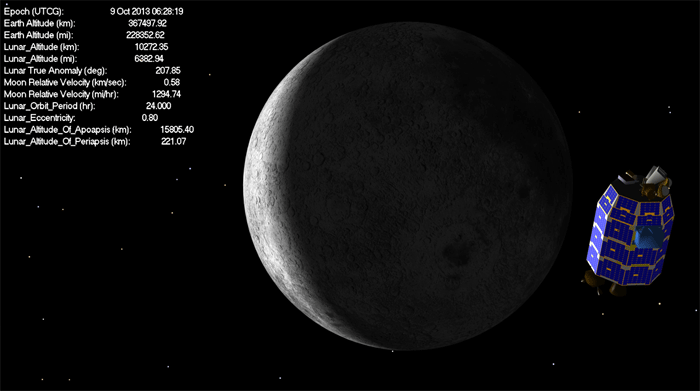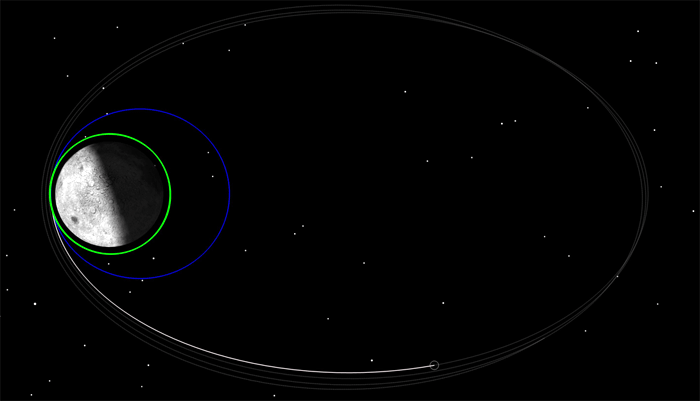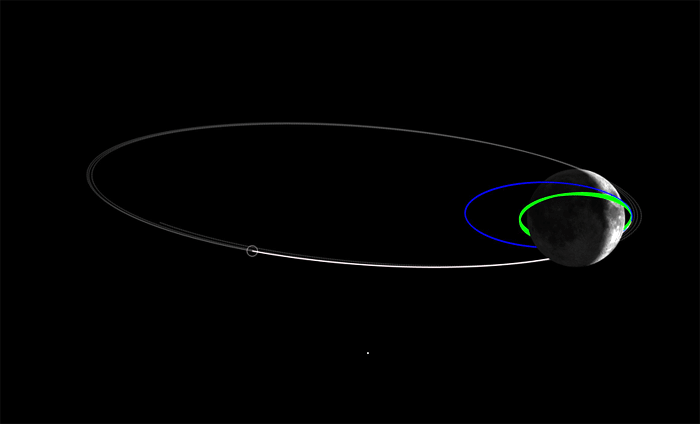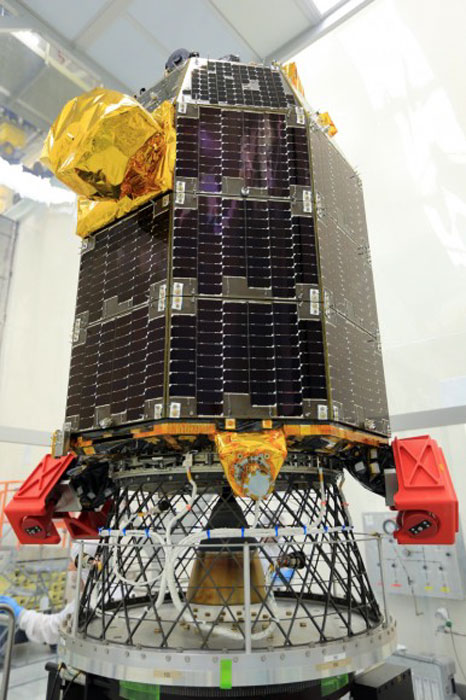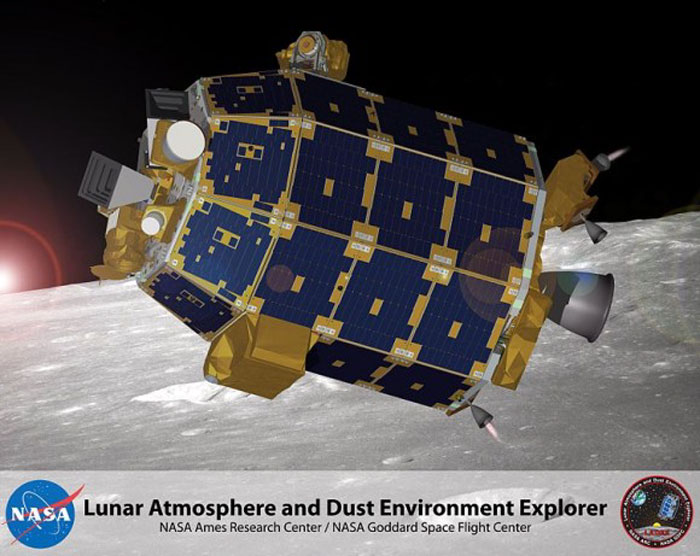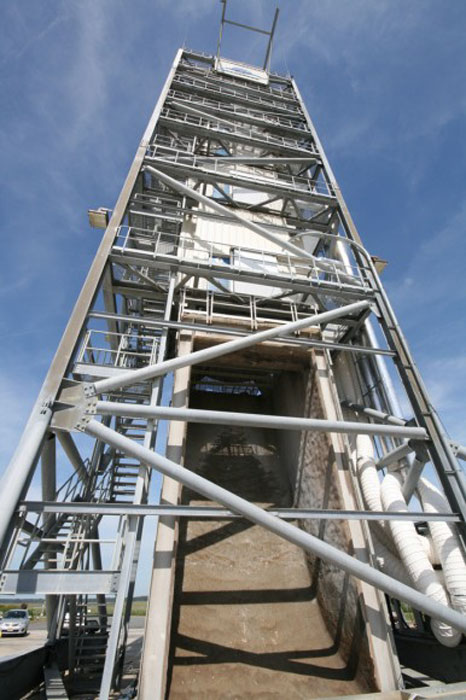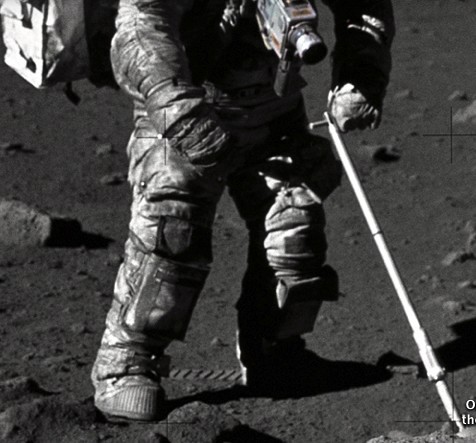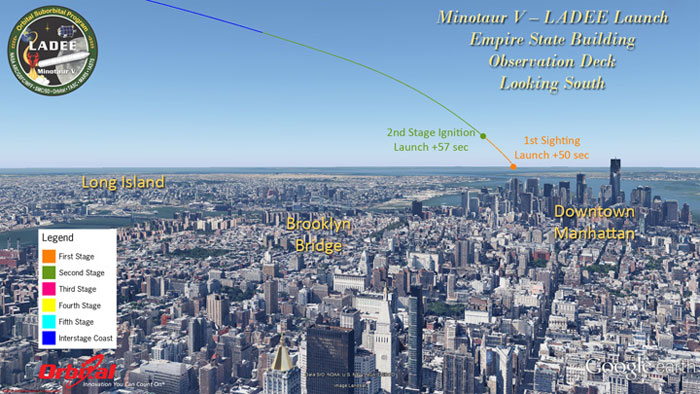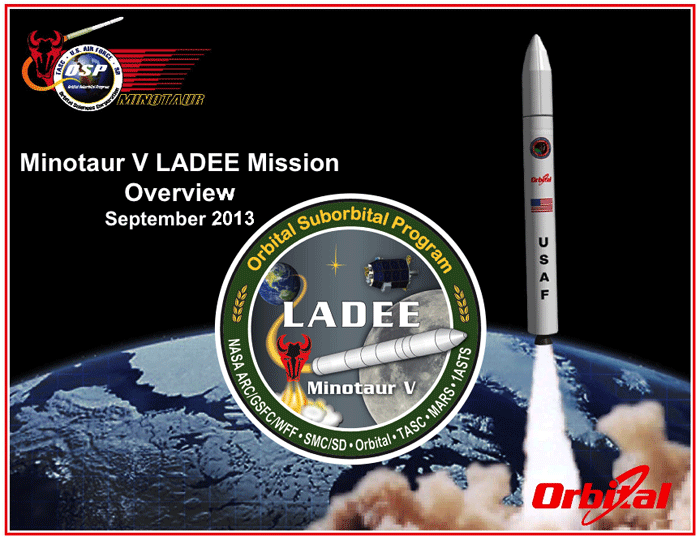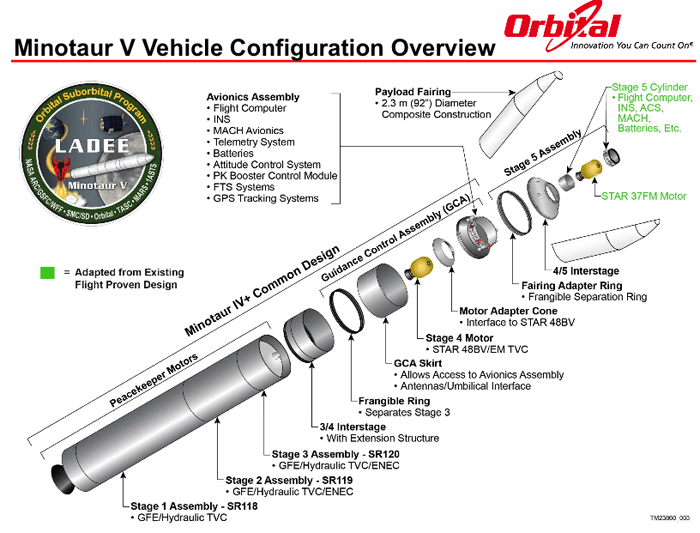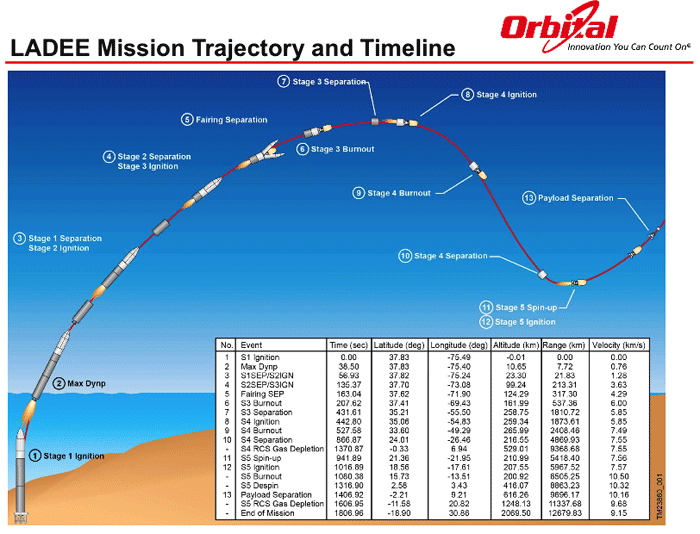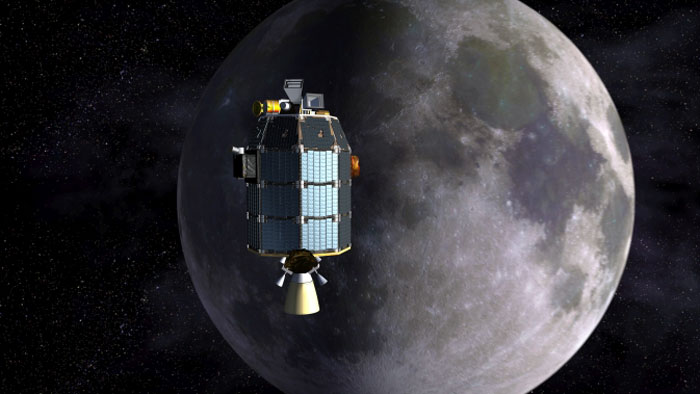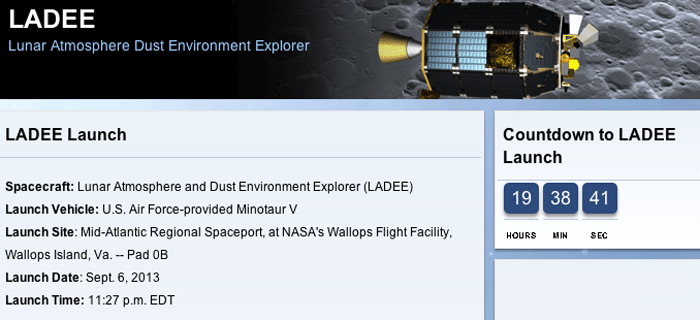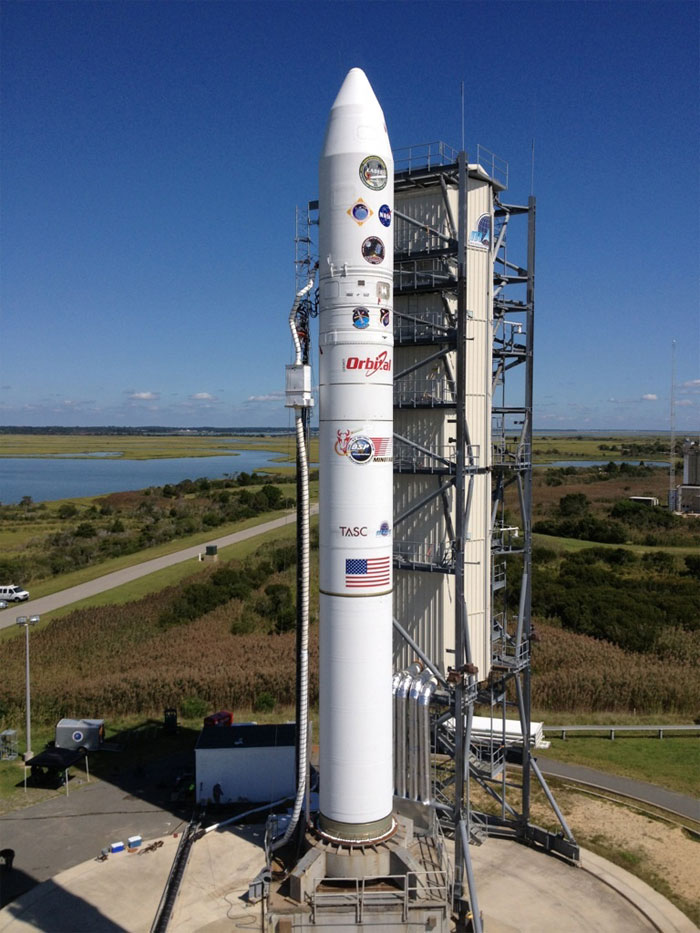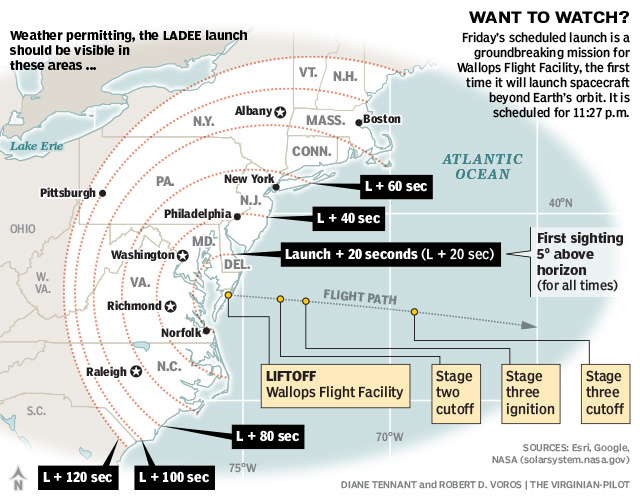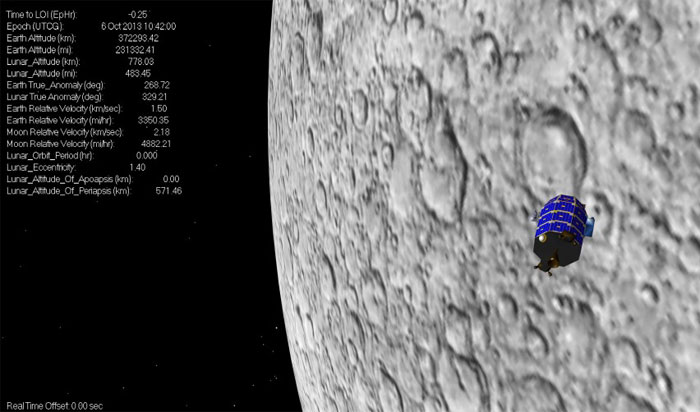There may be something funny going on with the stuff covering the Moon, and a new NASA mission launching next month is aiming to solve the mystery.
Gaze up at a brilliant Moon in the night sky and it’s hard to imagine that our companion world, Earth’s last high wilderness, is actually a rather dark and grimy place. The lunar albedo (fractional reflectivity) is only about 0.12 – in other words, over the visible spectrum, it reflects a mere 12% of the light hitting it, absorbing the rest.
By comparison the Earth has an average albedo of about 0.33, Venus – with its high and reflective clouds – is 0.76, and icy smooth Enceladus reflects almost all visible light with an astonishing near 1.0 albedo. In fact, out of all the major bodies in our solar system, only Mercury beats the Moon in terms of darkness, with a 0.11 reflectivity.
Despite its light absorbancy the Moon looks so bright to Earthlings because of its proximity to us, and because of our overall proximity to the Sun. But why is it so non-reflective? As with many phenomena, the answer is not entirely straightforward. The low average lunar albedo seems to be due to a variety of things, from the specifics of rock and ‘soil’ chemistry in a fairly intense radiation environment, to the physical texture of the surface.

Apollo 17 astronaut Gene Cernan looking a little smudgy (NASA/Apollo)
.
One of the key characteristics of the Moon is that it’s covered in dust. This isn’t household fluff either, it’s extremely abrasive, smells of gunpowder (probably from being implanted with solar wind ions), and sticks like crazy – as the Apollo astronauts discovered.
Without a thick protective atmosphere, the lunar surface has been pummeled by meteorites and micrometeorites for over 4 billion years, breaking rocks into finer and finer particles. These are raggedy things, with no wet weathering to smooth them, and their abrasive forms stick like crazy to spacesuits, humans, human nasal passages, and can even dig through Kevlar.
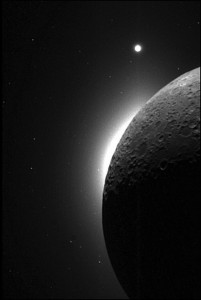
What exactly is this mysterious glow? Image taken by Clementine mission (BMDO/NASA)
.
But on a global scale lunar dust may exhibit some even more peculiar characteristics.
The Apollo astronauts were the first to witness a strange twilight phenomenon, a mysterious spread of light above and across the horizon. These remarkable displays were in stark contrast to the otherwise black skies, and a subject of considerable speculation.

The twilight horizon seen by Apollo 17 astronauts, from T-6 minutes to T-5 seconds before sunrise (NASA/Apollo)
.
They weren’t simple in structure, as seen in this page of sketches from Apollo 17 made during sunrise. In the span of a few minutes the glow above the horizon went from a centrally peaked luminosity to a set of ‘linear structures’ radiating outwards.
ut what could be reflecting and scattering sunlight in the lunar vacuum? It could be something like the tenuous glow of irradiated sodium ions, but it could also be the glinting of lunar dust – levitated from the surface by powerful electrostatic charges generated by interplanetary radiation swirling across the landscape.
In fact, electrical charges might even produce dust ‘fountains’. As the rising Sun’s light and radiation sweeps across the lunar surface it could generate large positive charges, enough to kick dust particles a mile high, until they drop back, only to get kicked up again like a pulsing fountain.
Except we still don’t know whether this is really what’s happening, and the whole subject of the so-called lunar ‘exosphere’ (an incredibly tenuous atmosphere, a mere 1/100,000th the density of the Earth’s at sea level) is still relatively little understood.
This may all change after September 6th 2013, when NASA launches the Lunar Atmospheric and Dust Environment Explorer, or LADEE (Scotty would be proud, no doubt).
After a 30 day approach, and 30 days of checkout, LADEE will spend about 100 days orbiting the Moon and examining any dust that makes it to high altitude (it will carry a dust collector and analyzer) and the chemical contents of the atmosphere. It’s a modest enough set of goals, but they could help solve this long-standing mystery and help us better understand our rather filthy, but seemingly brilliant, nearest cosmic neighbor – an object that is very much a part of our own planetary history.
Quelle:Scientific American
.
Update: 23.08.2013
NASA-Mond-Sonde LADEE vor Nachtstart am 6.September - Sichtbare für Millionen...
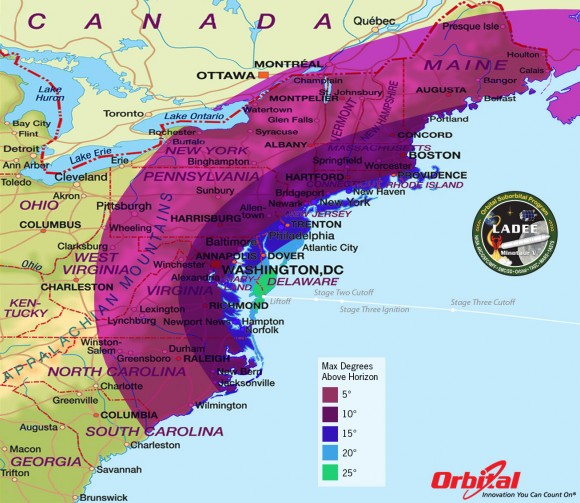
LADEE Minotaur V Launch – Maximum Elevation Map
The LADEE nighttime launch will be visible to millions of spectators across a wide area of the Eastern US -weather permitting. This map shows the maximum elevation (degrees above the horizon) that the Minotaur V rocket will reach during the Sep. 6, 2013 launch depending on your location along the US east coast. Credit: Orbital Sciences
.
A spectacular nighttime blastoff blazing a historic trail to the Moon is set to soar in two weeks time when NASA’s LADEE spacecraft lifts off from the Eastern Shore of Virginia at NASA’s Wallops Flight Facility on Wallops Island – from America’s newest spaceport.
NASA’s Lunar Atmosphere and Dust Environment Explorer (LADEE) Observatory will thunder to space at 11:27 p.m. Friday, Sept. 6, from the commercial Mid-Atlantic Regional Spaceport (MARS) launch complex 0B at NASA’s Wallops Island facility atop the maiden flight of the new, solid fueled Minotaur V rocket developed by Orbital Sciences Corp.
LADEE’s late night launch will be absolutely spectacular and visible to tens of millions of spectators up and down the US East coast and interior areas stretching into the Midwest- weather permitting.
“I love this mission,” said John Grunsfeld, NASA Associate Administrator for Science at NASA Headquarters, at a media briefing today, Aug. 22.
“With NASA’s prior LRO and GRAIL spacecraft we studied the Moon’s surface and interior. Now with LADEE we study the atmosphere and dust,” said John Grunsfeld.
The purpose of LADEE is to collect data that will inform scientists in unprecedented detail about the ultra thin lunar atmosphere, environmental influences on lunar dust and conditions near the surface. In turn this will lead to a better understanding of other planetary bodies in our solar system and beyond.
The small car sized LADEE lunar orbiter mission will be historic in many ways. It’s the first probe of any kind ever launched to beyond Earth orbit from NASA Wallops, as well as being the first planetary science mission from Wallops.
It also marks the first launch of a five stage rocket and the first launch of a decommissioned Peacekeeper missile from Wallops.
The first three stages of the Minotaur V are based on the nuclear armed Peacekeeper ICBM intercontinental ballistic missile built during the Cold War – now retired and refurbished by Orbital for peaceful uses. Its literally beating sword into ploughshares.
The 5th stage is a new addition and what makes this Minotaur a new rocket class. The added thrust is precisely what enables shooting for the Moon.
Recently, I had an exclusive tour and photoshoot up close and personal with the upper stages of LADEE’s Minotaur V rocket at Wallops prior to integration at the commercial launch pad – 0B – and will be reporting on that here and in upcoming stories.
“LADEE is equipped with three science instruments to study the atmosphere and dust and a lunar laser technology demonstration,” said Joan Salute, LADEE program executive, NASA Headquarters.
These include an ultraviolet and visible light spectrometer that will gather detailed information about the composition of the tenuous lunar atmosphere; a neutral mass spectrometer to measure variations in the lunar atmosphere over time; a laser dust experiment that will collect and analyze dust particle samples; and a laser communications experiment that will test the use of lasers in place of radio waves for high speed dad communications with Earth.
“The lunar atmosphere is so thin that the molecules never collide,’ said Sarah Noble, LADEE program scientist, NASA Headquarters.
“It’s a ‘Surface Boundary Exosphere’ which is actually the most common type of atmosphere in our Solar System.”
Scientists also hope to solve a mystery dating back nearly five decades to the Apollo moon landing era, by determining if electrically charged lunar dust is responsible for the pre-sunrise horizon glow seen by the Apollo astronauts and also by the unmanned Surveyor 7 lander, according to Noble.
“This is the first NASA mission with a dedicated laser communications experiment,” said Don Cornwell, mission manager for the Lunar Laser Communications Demonstration, NASA’s Goddard Space Flight Center, Greenbelt, Md.
I asked when we could see laser communications implemented on future NASA spacecraft?
“A new laser communications system could possibly be used on the 2020 Mars rover from the surface of Mars,” Grunsfeld told Universe Today.
The couch sized 844 pound (383 kg) robotic explorer was assembled at NASA’s Ames Research Center, Moffett Field, Calif., and is a cooperative project with NASA Goddard Spaceflight Center in Maryland.
The spacecraft is a first of its kind vehicle built from a NASA Ames-developed Modular Common Spacecraft Bus architecture that can be applied to other missions. The mission cost is approximately $280 million.
The Minotaur V will boost LADEE into a highly elliptical orbit. Then over the next 23 days, as LADEE orbits Earth 3.5 times, the Moon’s gravitational field will increase the perigee of its orbit. The spacecraft will fire its on-board braking thrusters to achieve lunar orbit.
The mission will fly in a very low science orbit of about 50 kilometers altitude above the moon. The science mission duration is approximately 100 days.
“It’s limited by the amount of onboard fuel required to maintain orbit,” Doug Voss, launch manager, Wallops, told Universe Today.
“I’m excited about the night launch because people up and down the Atlantic seacoast will be able to see it,” Jim Green, Planetary Science Division Director at NASA HQ, told me.
And don’t forget that NASA has a 2nd really big launch from Wallops slated for Sep. 17 – with blastoff of the Orbital Sciences Antares rocket and Cygnus cargo carrier on their historic 1st mission to the International Space Station (ISS).
Quelle:UT
.
Update: 28.08.2013
.
Space Laser To Prove Increased Broadband Possible
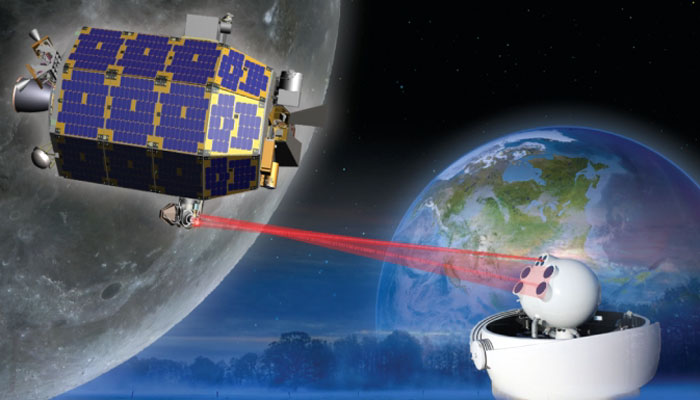
When NASA’s Lunar Laser Communication Demonstration (LLCD) begins operation aboard the Lunar Atmosphere and Dust Environment Explorer (LADEE) mission managed by NASA’s Ames Research Center in Moffett Field, Calif., it will attempt to show two-way laser communication beyond Earth is possible, expanding the possibility of transmitting huge amounts of data. This new ability could one day allow for 3-D High Definition video transmissions in deep space to become routine.
“The goal of the LLCD experiment is to validate and build confidence in this technology so that future missions will consider using it,” said Don Cornwell, LLCD manager. “This unique ability developed by MIT (Massachusetts Institute of Technology Lincoln Laboratory), has incredible application possibilities and we are very excited to get this instrument off the ground.”
Since NASA first ventured into space, through the moon landings, shuttle program, and unmanned exploration missions, radio frequency communication also known as RF, has been the communications platform used. But RF is reaching its limit just as demand for more data capacity continues to increase. The development of laser communications will give NASA the ability to extend communication applications such as increased image resolution and even 3-D video transmission into deep space.
LLCD is NASA’s first dedicated system for two-way communication using laser instead of radio waves. “LLCD is designed to send six times more data from the moon using a smaller transmitter with 25 percent less power as compared to the equivalent state-of-the-art radio (RF) system,” said Cornwell. “Lasers are also more secure and less susceptible to interference and jamming.”
The LLCD experiment is hosted aboard NASA’s LADEE: a 100-day robotic mission designed, built, integrated, tested and will be operated by Ames. LADEE will attempt to confirm whether dust caused a mysterious glow on the lunar horizon astronauts observed during several Apollo missions and explore the moon’s tenuous, exotic atmosphere. Launch of the LADEE spacecraft is set for September aboard a U.S. Air Force Minotaur V rocket, an excess ballistic missile converted into a space launch vehicle and operated by Orbital Sciences Corp. of Dulles, Va., from NASA’s Wallops Flight Facility on Wallops Island, Va.
The LADEE spacecraft will take 30 days to reach the moon because of its flight path. LLCD will begin operations shortly after arrival into lunar orbit and continue for 30 days afterward.
LLCD’s main mission objective is to transmit hundreds of millions of bits of data per second from the moon to Earth. This is equivalent to transmitting more than 100 HD television channels simultaneously. LLCD receiving capability will also be tested as tens of millions of bits per second are sent from Earth to the spacecraft. These demonstrations will prove the technology for increased bandwidth for future missions is possible.
There is a primary ground terminal at NASA’s White Sands Complex in New Mexico, to receive and transmit LLCD signals. The team at MIT designed, built, and tested the terminal. They also will be responsible for LLCD’s operation at that site.
There are two alternate sites, one located at NASA’s Jet Propulsion Laboratory in California, which is for receiving only. The other is being provided by the European Space Agency on the Spanish island of Tenerife, off the coast of Africa. It will have two-way communication capability with LLCD. “Having several sites gives us alternatives which greatly reduces the possibility of interference from clouds,” said Cornwell.
LLCD is a short duration experiment and the precursor to NASA’s long duration demonstration, the Laser Communications Relay Demonstration (LCRD). It also is a part of the agency’s Technology Demonstration Missions Program, which is working to develop crosscutting technology capable of operating in the rigors of space. LCRD is scheduled to launch in 2017.
NASA engineers believe this technology becomes even more advantageous for communications beyond Earth’s orbit. In the past, NASA has experimented with sending low amounts of individual pulses to cameras on far-away space probes near Jupiter, Mars, and Mercury.
Recently, an image of Leonardo da Vinci’s painting, the Mona Lisa, was transmitted to NASA’s Lunar Reconnaissance Orbiter (LRO) spacecraft orbiting the moon. “But this was done at only hundreds of data bits per second,” said Cornwell. “LLCD will be the first dedicated optical communication system and will send data millions of times faster.”
The European Space Agency already has successfully demonstrated laser communication between satellites in Earth orbit. Recently they launched Alphasat to demonstrate laser transmission between a low-earth orbit satellite and a satellite in geostationary Earth orbit. LLCD’s laser link from the moon will be ten times farther away.
NASA is looking upon laser communication as the next paradigm shift in future space communication, especially deep space. “We can even envision such a laser-based system enabling a robotic mission to an asteroid,” said Cornwell. “It could have 3-D, high-definition video signals transmitted to Earth providing essentially ‘telepresence’ to a human controller on the ground.”
Quelle: NASA
-
Update: 30.08.2013
.
In an attempt to answer prevailing questions about our moon, NASA is making final preparations to launch a probe at 11:27 p.m. EDT Friday, Sept. 6, from NASA's Wallops Flight Facility on Wallops Island, Va.
The small car-sized Lunar Atmosphere and Dust Environment Explorer (LADEE) is a robotic mission that will orbit the moon to gather detailed information about the structure and composition of the thin lunar atmosphere and determine whether dust is being lofted into the lunar sky. A thorough understanding of these characteristics of our nearest celestial neighbor will help researchers understand other bodies in the solar system, such as large asteroids, Mercury, and the moons of outer planets.
"The moon's tenuous atmosphere may be more common in the solar system than we thought," said John Grunsfeld, NASA's associate administrator for science in Washington. "Further understanding of the moon's atmosphere may also help us better understand our diverse solar system and its evolution."
The mission has many firsts, including the first flight of the Minotaur V rocket, testing of a high-data-rate laser communication system, and the first launch beyond Earth orbit from the agency's Virginia Space Coast launch facility.
LADEE also is the first spacecraft designed, developed, built, integrated and tested at NASA's Ames Research Center in Moffett Field, Calif. The probe will launch on a U.S. Air Force Minotaur V rocket, an excess ballistic missile converted into a space launch vehicle and operated by Orbital Sciences Corp. of Dulles, Va.
LADEE was built using an Ames-developed Modular Common Spacecraft Bus architecture, a general purpose spacecraft design that allows NASA to develop, assemble and test multiple modules at the same time. The LADEE bus structure is made of a lightweight carbon composite with a mass of 547.2 pounds -- 844.4 pounds when fully fueled.
"This mission will put the common bus design to the test," said Ames Director S. Pete Worden. "This same common bus can be used on future missions to explore other destinations, including voyages to orbit and land on the moon, low-Earth orbit, and near-Earth objects."
Butler Hine, LADEE project manager at Ames, said the innovative common bus concept brings NASA a step closer to multi-use designs and assembly line production and away from custom design. "The LADEE mission demonstrates how it is possible to build a first class spacecraft at a reduced cost while using a more efficient manufacturing and assembly process," Hine said.
Approximately one month after launch, LADEE will begin its 40-day commissioning phase, the first 30 days of which the spacecraft will be performing activities high above the moon's surface. These activities include testing a high-data-rate laser communication system that will enable higher rates of satellite communications similar in capability to high-speed fiber optic networks on Earth.
After commissioning, LADEE will begin a 100-day science phase to collect data using three instruments to determine the composition of the thin lunar atmosphere and remotely sense lofted dust, measure variations in the chemical composition of the atmosphere, and collect and analyze samples of any lunar dust particles in the atmosphere. Using this set of instruments, scientists hope to address a long-standing question: Was lunar dust, electrically charged by sunlight, responsible for the pre-sunrise glow above the lunar horizon detected during several Apollo missions?
After launch, Ames will serve as a base for mission operations and real-time control of the probe. NASA's Goddard Space Flight Center in Greenbelt, Md., will catalogue and distribute data to a science team located across the country.
NASA's Science Mission Directorate in Washington funds the LADEE mission. Ames manages the overall mission. Goddard manages the science instruments and technology demonstration payload, the science operations center and provides overall mission support. Wallops is responsible for launch vehicle integration, launch services and operations. NASA's Marshall Space Flight Center in Huntsville, Ala., manages LADEE within the Lunar Quest Program Office.
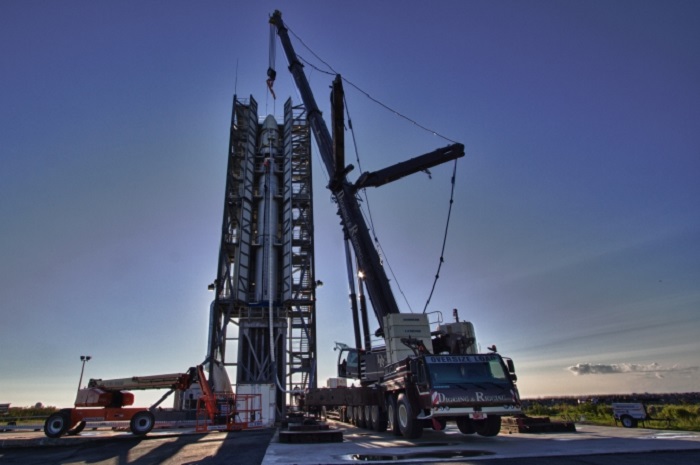
The LADEE spacecraft in the nose-cone at the top of the full Minotaur V launch vehicle stack. LADEE is the first spacecraft designed, developed, built, integrated and tested at NASA's Ames Research Center in Moffett Field, Calif.
.
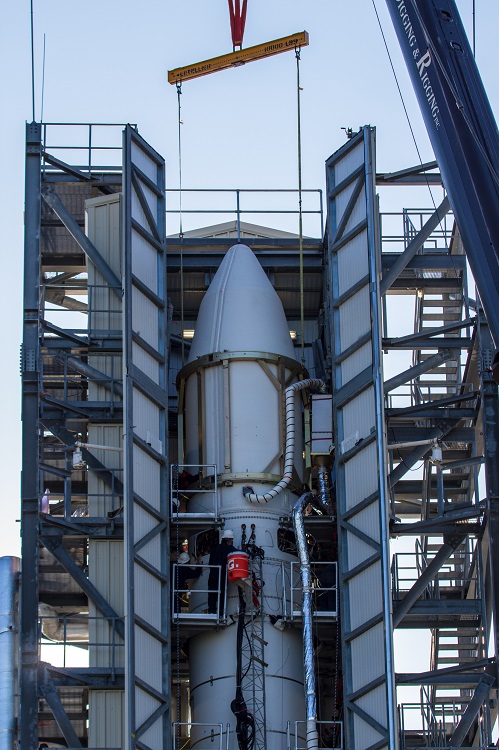
NASA's Lunar Atmosphere and Dust Environment Explorer (LADEE) spacecraft sits in the nose-cone at the top of the full Minotaur V launch vehicle stack.
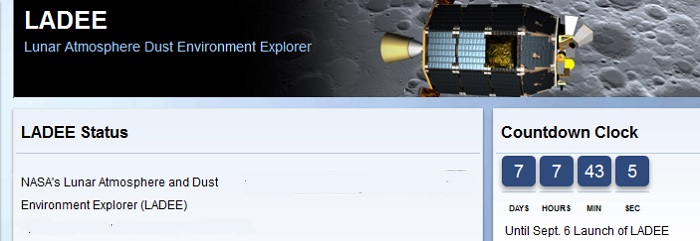
Quelle: NASA
.
Update: 2.09.2013
.
$6 million CU-Boulder instrument to fly on Sept. 6 NASA mission to moon
.
.
Update: 3.09.2013
.
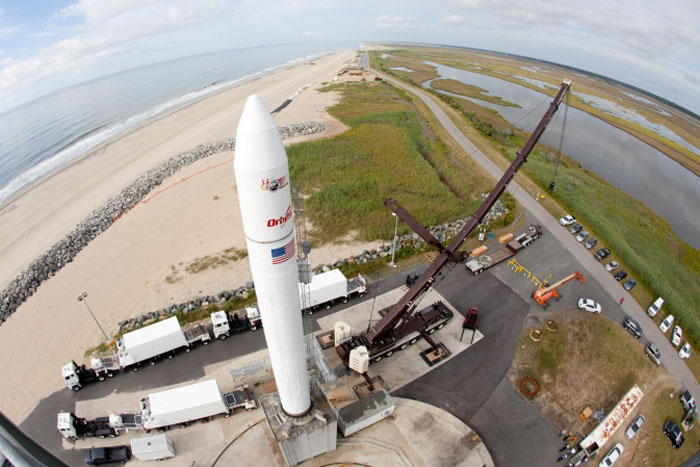
A wide-angle view of an inert Minotaur V launch vehicle is erected on the Mid-Atlantic Regional Spaceport's pad 0B at NASA's Wallops Flight Facility in Virginia during a pathfinder exercise for NASA's Lunar Atmosphere and Dust Environment Explorer (LADEE) Mission.
Image Credit: NASA Wallops/Jackie Adkins
.
LADEE's launch in 2013 will mark several firsts. It will be the first payload to launch on a U.S. Air Force Minotaur V rocket integrated by Orbital Sciences Corp., and the first deep space mission to launch from NASA's Goddard Space Flight Center's Wallops Flight Facility in Virginia.
The Minotaur V is a five-stage version of the Minotaur IV. It is designed to provide launches for small missions requiring geosynchronous transfer or translunar orbits.
Wallops, located on Virginia's eastern shore, was established in 1945 by the National Advisory Committee for Aeronautics. The oldest continuous rocket launch range in the United States, Wallops is a national resource for aerospace-based science and technology research using suborbital and orbital vehicles.
.
NASA Administrator Bolden and LADEE Team
Date: 24 May 2013
NASA Administrator Charles Bolden (center) poses with the LADEE team on a recent visit to the Ames Research Center, Moffet Field, CA. LADEE (which stands for Lunar Atmosphere and Dust Environment Explorer) is the first spacecraft designed and built at Ames and is scheduled to launch from Wallops Flight Facility, VA.
.
Quelle: NASA
.
Quelle: Orbital
.
Update: 5.09.2013
.
LADEE Mission Overview
.
NASA's Lunar Atmosphere and Dust Environment Explorer (LADEE, pronounced like "laddie") is a robotic mission that will orbit the moon to gather detailed information about the lunar atmosphere, conditions near the surface and environmental influences on lunar dust. A thorough understanding of these characteristics will address long-standing unknowns, and help scientists understand other planetary bodies as well.

NASA Wallops Flight Facility Launch Manager Doug Voss, right, and NASA Goddard Space Flight Center Mission Manager for the Lunar Laser Communications Demonstration Don Cornwell talk during a LADEE mission briefing at NASA Headquarters, Thursday, August 22, 2013 in Washington. Data from NASA's LADEE mission will provide unprecedented information about the environment around the moon and give scientists a better understanding of other planetary bodies in our solar system and beyond. The LADEE mission is scheduled to launch at 11:27 p.m. Friday, Sept. 6, from NASA's Wallops Flight Facility on Wallops Island, Va. Photo Credit: (NASA/Bill Ingalls)

NASA Lunar Atmosphere and Dust Environment Explorer (LADEE) Program Scientist Sarah Noble talks during a NASA Social about the LADEE mission at NASA Wallops Flight Facility, Thursday, Sept. 5, 2013 on Wallops Island, VA. Fifty of NASA's social media followers are attending a two-day event in support of the LADEE launch. Data from LADEE will provide unprecedented information about the environment around the moon and give scientists a better understanding of other planetary bodies in our solar system and beyond. LADEE is scheduled to launch at 11:27 p.m. Friday, Sept. 6, from NASA's Wallops Flight Facility. Photo Credit: (NASA/Carla Cioffi)
Quelle: NASA
.
Update: 6.09.2013
.
.
Quelle: NASA
.
Update: 15.05 MESZ
.
Wallops' 1st moon mission launch a 'go'
.
WALLOPS ISLAND — Thousands of space fans and invited guests have come to northern Accomack County to view the liftoff tonight of the first moon mission launched from Virginia.
The island resort town of Chincoteague near NASA Wallops Flight Facility is ground central for local viewing of the launch of NASA’s Lunar Atmosphere and Dust Environment Explorer, which will be carried aloft by a five-stage Minotaur V rocket from a launch pad at the Mid-Atlantic Regional Spaceport on Wallops Island.
The launch is scheduled for 11:27 p.m.
There is a four-minute window for tonight’s launch, with alternate dates and times running through Sept. 10.
East Coast residents from the Carolinas to Maine and as far west as western Pennsylvania should be able to see the rocket in the sky, NASA Wallops spokesman Keith Kohler said.
In addition, live television coverage from Wallops begins at 9:30 p.m. on NASA TV.
Live coverage of the launch also will be broadcast on the huge screen in New York’s Times Square from 10:30 p.m. to 1 a.m.
The weather forecast is calling for a 95 percent chance of good weather at launch time, “so all systems are go,” said Sarah Daugherty, NASA Wallops Flight Facility test director.
Chincoteague, the site of the popular annual Pony Penning held each year in July, is not unused to handling crowds.
The town’s preparations for the lunar launch were “a mixture of what we do for Pony Penning and what we do for Fourth of July,” said Town Manager Robert Ritter.
Chincoteague is where the majority of visitors coming to the area for the launch are staying, including some 1,400 VIP guests who will board 33 coach buses at the Chincoteague Community Center this evening to travel to NASA Wallops Flight Facility for the launch.
The town also is where the two officially designated areas for launch viewing are: along Maddox Boulevard and Beach Road east of the traffic circle, and in Robert Reed Waterfront Park downtown.
Other nearby areas the public typically views launches from, including the beach at Assateague Island National Seashore, are off-limits this time because the lunar mission’s trajectory puts them within a hazard zone.
.
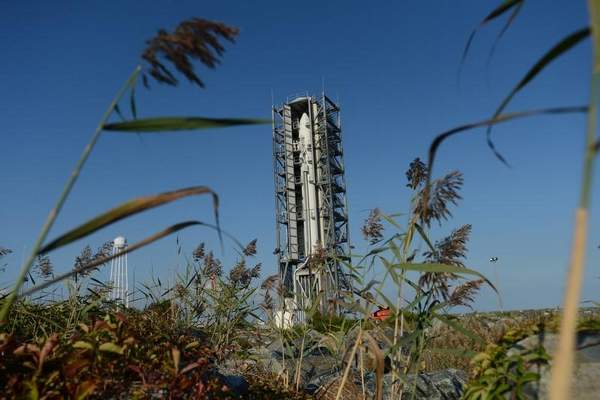
The beach will close 7 p.m. on launch day.
Parking along the causeway leading from the mainland to Chincoteague Island is not allowed and could be dangerous; the road runs through the marsh and in most places has no shoulders.
John Grunsfeld, associate administrator for the Science Mission Directorate at NASA Headquarters in Washington, D.C., on Thursday called Lunar Atmosphere and Dust Environment Explorer “a mission to help unravel the mysteries of the universe.
Grunsfeld and four other NASA officials spoke to some 70 journalists and 50 social media representatives at a prelaunch briefing Thursday afternoon.
He predicted the mission will give scientists “whole new vistas” on the moon.
NASA Wallops Flight Facility Director Bill Wrobel praised the teamwork evident among the entities involved in the mission, including NASA Ames Research Center in California, where the compact car-sized LADEE spacecraft was designed and built.
“I’m confident we are going to have a good showing here tomorrow evening,” said Wrobel.
The is a mission of many firsts. In addition to being the first lunar mission launched from Virginia and the first moon mission flown by Dulles, Va.-based Orbital Sciences Corp., it is the first mission to use Orbital’s Minotaur V rocket, a five-stage, 78-foot-tall rocket that weighs about the same as 40 minivans.
.
Quelle: delmarva
.
Update: 22.00 MESZ
It’s a go for liftoff tonight at NASA’s Wallops Flight Facility for the first moon mission to be launched from Virginia.
NASA’s Lunar Atmosphere and Dust Environmental Explorer will be carried aloft by a five-stage Minotaur V rocket.
At 11:27 p.m. there will be a four minute launch window with alternate dates running through September 10th.
NASA Wallops Flight Facility officials say there is a 95 percent chance for good weather.
14-hundred VIP guests are expected to be in Chincoteague to view the launch.
Wallops officials say that residents from the Carolinas to Maine should be able to view the rocket rise up into the night sky.
New Yorkers will be able to see the live launch on the huge screen that overlooks Times Square beginning at 10:30 p.m.
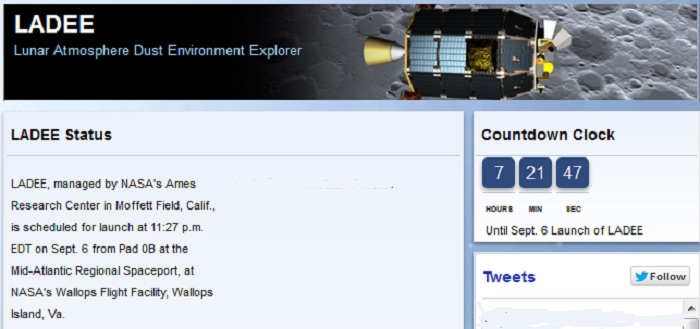
.
Update: 7.09.2013 / 4.05 MESZ - LIVE NASA-TV
.
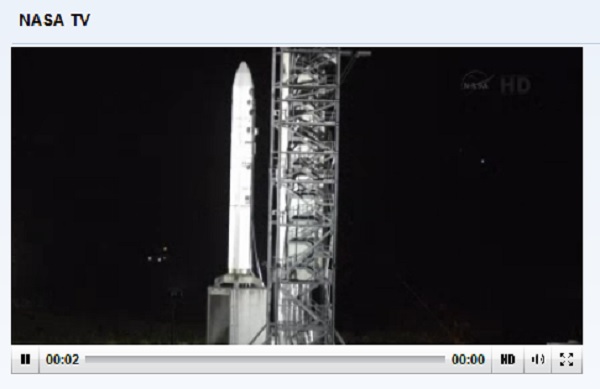
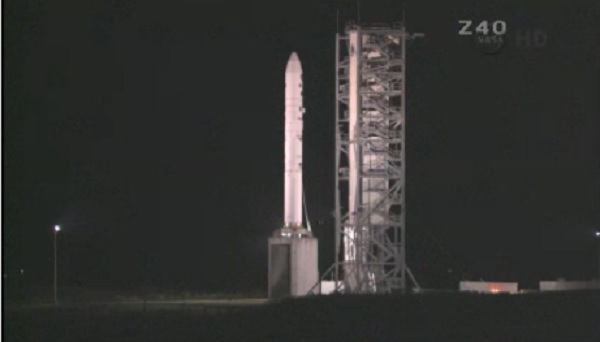
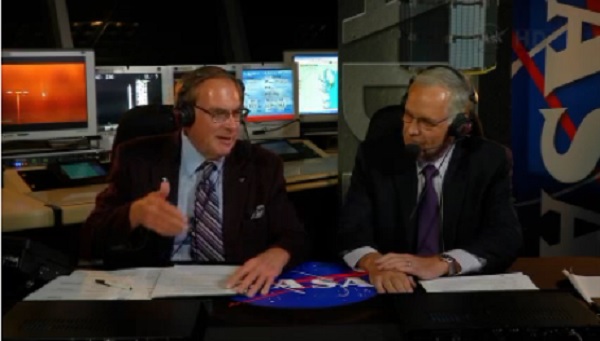

Frams: NASA-TV
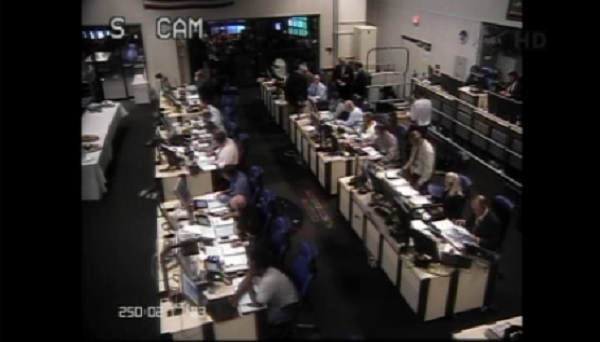
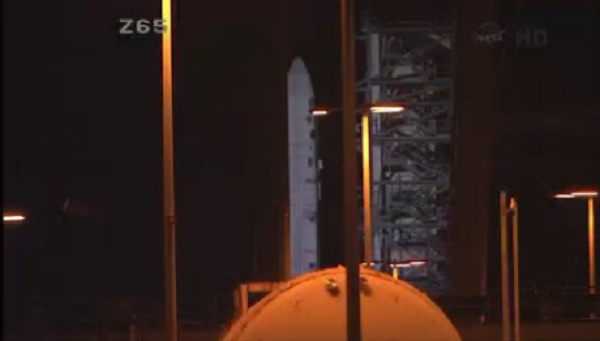
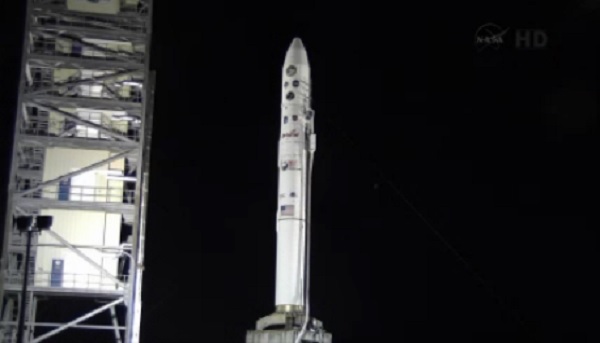
START von LADEE - 5.30 MESZ
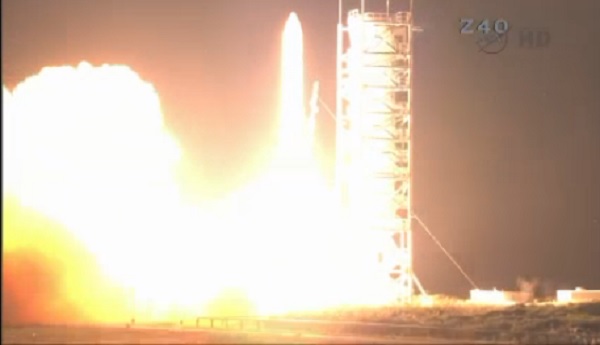
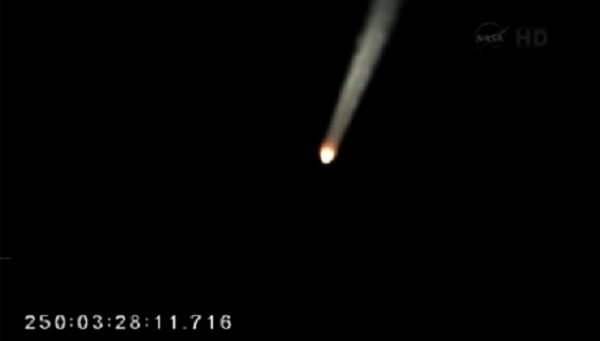


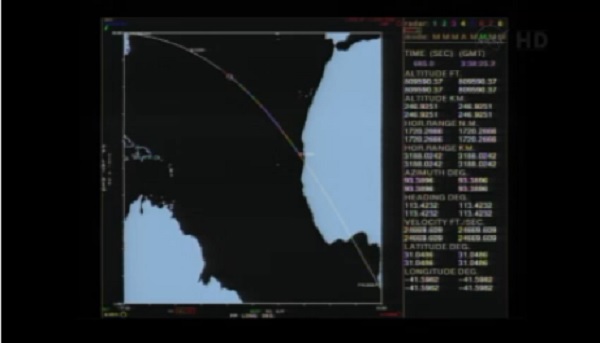
.
Update: 2.10.2013
.
NASA's New Moon Probe Begins Final Leg of Lunar Trek
NASA's newest lunar probe is gearing up to begin the final phase of its month-long trek to the moon.
The space agency's LADEE moon dust spacecraft is in its third and final orbit around Earth before moving to the moon, and everything is looking good. The lunar probe launched into space on Sept. 6 to begin its circuitous route to the moon.
LADEE's second burn, designed to take it into a high elliptical orbit, was so "perfect" that the third maneuver planned to take the probe into an even higher orbit will not be necessary, NASA officials wrote in a mission update on Sept. 27. The loveseat-sized probe will make its final close flyby of Earth Tuesday (Oct. 1).
.
Update: 6.10.2013
.
LADEE set to enter lunar orbit after transit from Earth
.
One month after a dazzling late-night launch from Virginia sent NASA's LADEE mission into orbit, ground controllers in California are readying the lunar probe for a make-or-break rocket burn Sunday to put the modest spacecraft into orbit around the moon. The four-minute engine firing is scheduled to begin at 1057 GMT (6:57 a.m. EDT), changing the craft's velocity by 737 mph and allowing the moon's gravity to capture LADEE in a retrograde equatorial lunar orbit.
The $280 million Lunar Atmosphere and Dust Environment Explorer launched Sept. 6 aboard a Minotaur 5 rocket from Wallops Island, Va., putting on a Friday night pyrotechnic sky show for observers along the U.S. East Coast.
The five-stage launcher put LADEE in a high-altitude transfer orbit, and the bullet-shaped spacecraft completed three loops around Earth over the last month, using its rocket thrusters to nudge itself higher to set up for an intercept with the moon's orbit Sunday.
"On the third pass, we're hanging out there in space right around where the moon is going to come by," said Butler Hine, LADEE's project manager at NASA's Ames Research Center, in a prelaunch press conference. "It swings by, whips us around behind it, and then once we come out from behind the moon, we do a big braking burn with our main engine. That braking burn is what captures us around the moon."
LADEE's main engine, built by Space Systems/Loral, fired several times in September to change the probe's trajectory on the way to the moon. Sunday's lunar orbit insertion maneuver is the longest planned engine firing in LADEE's mission.
The mission's arrival at the moon is not impacted by the partial shutdown of the federal government, which furloughed 97 percent of NASA's civil servant workforce because Congress failed to pass a budget for the new fiscal year.
LADEE's operations are not affected by the shutdown because the mission is in a critical phase, said Rachel Hoover, a spokesperson at NASA's Ames Research Center, before the shutdown.
Sources said NASA had no plans to communicate the outcome of LADEE's insertion burn to the media or the public because the agency's public affairs staff is not at work.
Two more rocket firings are planned for Oct. 9 and Oct. 12 to lower LADEE's lunar orbit to an altitude of 155 miles. The spacecraft will initially be in an elliptical 24-hour orbit after Sunday's insertion maneuver.
During the mission's 30-day commissioning phase, due to begin in mid-October, ground teams will activate the spacecraft's research payload and deploy covers on LADEE's three science instruments. The sensors all appeared healthy during aliveness checks after LADEE's launch.
The spacecraft, which stands 7.7 feet tall and stretches about 4.7 feet in diameter, also hosts a laser communications package to demonstrate next-generation high-speed data links between Earth-based antennas and deep space probes.
The laser communications demo is scheduled to kick off later this month, and LADEE's laser payload - built by MIT Lincoln Laboratory - will connect the spacecraft with ground terminals in New Mexico, California and the Canary Islands.
LADEE will try to send and receive data packets transmitted through a laser beam connecting the spacecraft and the ground terminals at a range of about 250,000 miles.
Officials say laser communications on future missions could enable 3D videos and high-resolution imagery to be beamed from Mars to Earth at fiber-optic speeds, limited only by the one-way light time, the time it takes for a signal to travel from distant destinations back to Earth.
Then LADEE will begin its 100-day science mission, dipping as low as 12 miles above the moon's surface.
"LADEE has two main science goals: To understand the lunar atmosphere as well as the dust environment around the moon," said Sarah Noble, LADEE's program scientist.
The orbiter's three instruments - a lunar dust experiment, neutral mass spectrometer and ultraviolet spectrometer - will scoop up dust particles and analyze the composition and variability of the moon's tenuous atmosphere.
Quelle: SN
.
LADEE in Lunar Orbit
The LADEE spacecraft is now in Lunar orbit. Tracking data will later confirm the precise parameters of the orbit, but based on telemetry of thruster performance and accelerations, the LOI-1 burn appears to be close to nominal.
The planned Lunar orbit has an orbit period of 23.1 hrs. The next planned maneuver (Lunar Aposelene Maneuver 1, or LAM1) is scheduled for the 2nd aposelene, which would occur roughly 1.5 days from now. For LOI-1 results close to nominal, this maneuver can be waived.
LOI-2 is nominally scheduled for 3 revs after LOI-1.
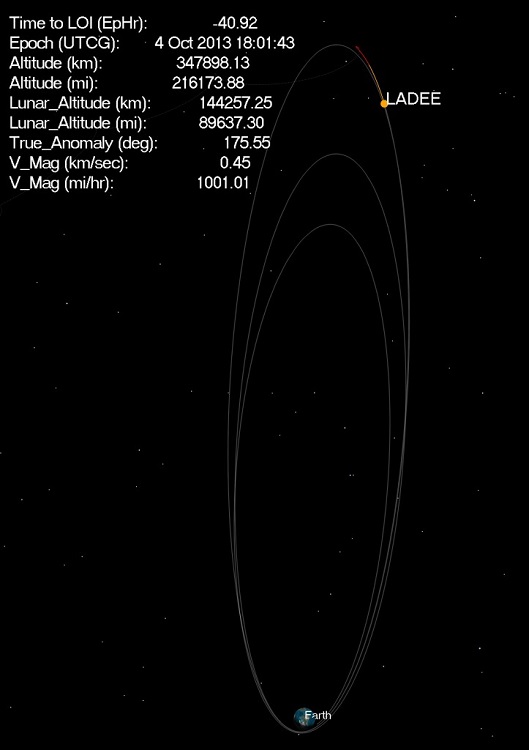
LADEE trajectory update 10-4-13
LADEE is rapidly approaching the Moon. Depending on who you talk to, you can consider the spacecraft to be within the “Sphere of Influence” of the Moon somewhere near 66,000 km (on LADEE we switch central bodies on our numerical integrators at 50,000 km, but that’s not a magic number). So we’re not quite Moon-Centered yet, but that doesn’t stop us from giving you pictures in a Moon centered frame.
.
Update: 7.10.2013
.
LADEE in Lunar Orbit
.
The LADEE spacecraft is now in Lunar orbit. Tracking data will later confirm the precise parameters of the orbit, but based on telemetry of thruster performance and accelerations, the LOI-1 burn appears to be close to nominal.
The planned Lunar orbit has an orbit period of 23.1 hrs. The next planned maneuver (Lunar Aposelene Maneuver 1, or LAM1) is scheduled for the 2nd aposelene, which would occur roughly 1.5 days from now. For LOI-1 results close to nominal, this maneuver can be waived.
LOI-2 is nominally scheduled for 3 revs after LOI-1.
.
.
Quelle:astrogators guide
.
LADEE arrives at the moon for lunar science mission
.
NASA's LADEE spacecraft slipped into orbit around the moon Sunday, beginning a feverish four-month campaign to demonstrate a next-generation laser communications system and answer long-standing questions about the nature and origin of the tenuous lunar atmosphere.
The modest Lunar Atmosphere and Dust Environment Explorer spacecraft, measuring about 7.7 feet tall and 4.7 feet in diameter, fired its liquid-fueled engine at 1057 GMT (6:57 a.m. EDT) for four minutes, allowing the moon's gravity to capture it into a high-altitude orbit over the equator.
Controllers based at NASA's Ames Research Center in California - kept operating despite the partial shutdown of the federal government - oversaw the critical maneuver.
NASA's public affairs personnel are furloughed by the budget impasse in Congress, but mission officials confirmed the orbit insertion maneuver occurred as planned.
Radio ranging data will determine the orbit's exact parameters, but officials said LADEE's main engine fired for the expected duration, so the spacecraft should be in its planned orbit.
Mission plans called for LADEE to enter a highly elliptical retrograde orbit taking the spacecraft around the moon approximately every 24 hours. Two major orbit adjust burns are planned Oct. 9 and Oct. 12 to lower the altitude of LADEE's orbit, ultimately reaching a near-circular orbit about 155 miles over the moon's equator.
"The orbit around the moon is retrograde, meaning opposite the lunar rotation, and also around the equator," said Greg Delroy, LADEE's deputy project scientist at Ames. "A lot of the lunar science missions have done a polar orbit, but because of the kind of science we're after, we very much want to be around the equator."
Sunday's arrival at the moon came after a one-month transit from Earth following LADEE's launch from Wallops Island, Va., aboard a Minotaur 5 rocket. LADEE completed three loops around Earth over the past month, aiming to arrive in the vicinity of the moon Sunday for the make-or-break orbit insertion burn.
Once LADEE reaches the 155-mile-high orbit Oct. 12, ground teams will begin commissioning the probe's three science instruments, deploy aperture covers from the sensors, and activate the spacecraft's laser communications package for a 30-day demonstration of high-speed optical communications.
The Lunar Laser Communications Demonstration aboard LADEE will link up with ground stations in New Mexico, California and the Canary Islands, exchanging data packets at speeds unattainable with radio communications systems.
"Once the two systems are locked and acquired, then we can send tens of megabits of data per second from the Earth up to the moon, and similarly we can send hundreds of megabits per second from the moon on LADEE down to the Earth," said Don Cornwell, the laser communication demonstration mission manager from NASA's Goddard Space Flight Center in Greenbelt, Md.
Built by MIT Lincoln Laboratory, the communications payload will help build confidence for future missions to use laser data links from deep space, including NASA's manned asteroid mission and future rovers on the surface of Mars.
"NASA has a need for faster download speeds for data from space," Cornwell said. "We'd like to be able to send high-resolution images, movies in 3D even, from satellites that not only orbit the Earth but also from probes that will go to the moon and beyond."
Another benefit of laser communications is it requires fewer components and smaller terminals, both on the ground and in space.
"Light waves are shorter in wavelength than radio waves, so we can use smaller transmitters and receivers," Cornwell said.
After LADEE's one-month commissioning and laser demo phase, controllers will put the probe in an orbit closer to the moon for a 100-day research mission exploring the dust environment just above the lunar surface and measuring the composition of the moon's ultra-thin atmosphere.
The moon's atmosphere, or exosphere, is so thin its atoms never collide, according to Sarah Noble, LADEE's program scientist.
Quelle: SN
.
Update: 8.10.2013
.
LADEE Update 10-07-13: Safe in Lunar Orbit after LOI-1
The LADEE Spacecraft successfully performed Lunar Orbit Insertion maneuver 1 (LOI-1) on Oct. 6, 2013 3:57 PDT. The LOI-1 maneuver captured LADEE into a 24 hr orbit. After 3 days (and 3 revs) in the capture orbit, the spacecraft will perform LOI-2 on Oct. 9 at 3:37 PDT. The second of 3 Lunar Orbit Insertion maneuvers, LOI-2 will reduce LADEE’s orbit down to a 4 hr orbit.
Finally, LOI-3 will be performed Oct. 12 at 8:00 PM PDT to circularize the spacecraft in a 235 km orbit. LADEE will spend a month in this “commissioning” orbit, while the spacecraft is checked out before full-time lunar science begins, and the Laser-Communications experiment will be tested.
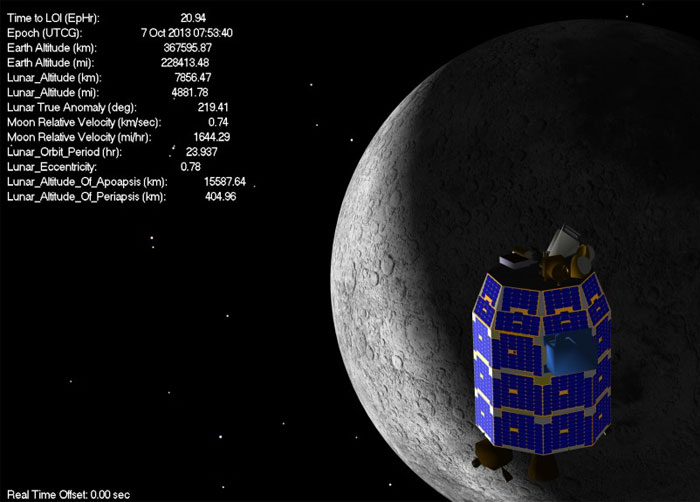
.
At this time (7 Oct. 2013 7:53) LADEE is past its first aposelene, and is headed for its first periselene after capture.
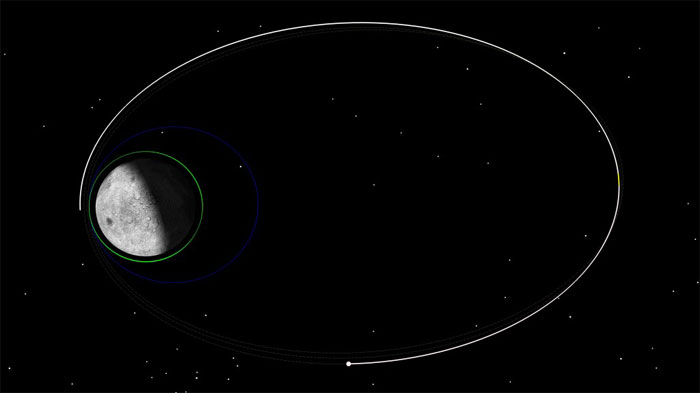
Quelle: astrogators guide
.
Update: 10.10.2013
.
LADEE Trajectory Update 10-9-13: 4 hrs to LOI-2
.
Lunar Orbit Insertion Maneuver 2 (LOI-2) is upon us, scheduled for 09 Oct 2013 10:38 UTC. This maneuver will lower our periselene altitude from 15700 km down to 2220 km and change our orbit period from 24 hrs to 4 hrs.
The maneuver will last for 220.8 seconds, and will impart a delta-V (change in velocity) of 293 m/sec.
Right now LADEE sees this view:
.
.
And the orbit from above would look like this:
.
.
From Earth, if you could see the orbit, you’d see this:
.
.


